Electric bicycles, also known as e-bikes, are revolutionizing the way we think about transportation and recreation. Combining the traditional functionality of a bicycle with the power of an electric motor, e-bikes provide a unique and exciting riding experience.
At first glance, an e-bike may look similar to a regular bicycle, but there are some key differences that set them apart. The most noticeable difference is the presence of a motor and a battery pack. These components work together to provide an extra boost of power, helping riders travel more efficiently and with less effort.
When you hop on an e-bike and start pedaling, the motor is activated and provides assistance to your pedaling effort. This assistance can vary depending on the type of e-bike and the specific settings. Some e-bikes offer a throttle mode where you can control the speed solely by using a throttle, while others offer pedal-assist mode where the motor assists your pedaling effort.
The battery pack is what powers the motor and is typically located on the frame of the e-bike. It can be easily removed for charging purposes and is usually equipped with a charger that can be plugged into a standard electrical outlet. The range of an e-bike, or how far it can go on a single charge, depends on factors such as the battery capacity, the level of assistance being used, and the terrain.
E-bikes make use of advanced technology to ensure a smooth and enjoyable ride. Many models come with different levels of assistance that can be adjusted according to your preferences. For example, if you’re climbing a steep hill, you can increase the assistance level to make it easier, or if you want a more challenging workout, you can decrease the assistance level. This flexibility is one of the many reasons why e-bikes are becoming increasingly popular among people of all ages and fitness levels.
In addition to the motor and battery pack, e-bikes are equipped with other components found in regular bicycles such as brakes, gears, and wheels. This means that maintenance and repairs can be done by any bike shop, making e-bikes a convenient option for riders.
Overall, e-bikes offer an exciting and eco-friendly alternative to traditional means of transportation. Whether you’re commuting to work, running errands, or exploring the great outdoors, electric bicycles provide a fun and efficient way to get around. In the following sections, we will delve deeper into the different types of e-bikes available and the benefits of owning and riding one.
Components of an electric bicycle (battery, motor, controller, and sensors)

Photo by Svitch Bike on Pexels
An electric bicycle, also known as an e-bike, is equipped with several key components that work together to provide an enhanced cycling experience. These components include the battery, motor, controller, and sensors.
The battery is the heart of an electric bicycle. Usually located on the frame or attached to a rack, it supplies power to the motor. The battery is rechargeable and stores electrical energy, typically measured in watt-hours (Wh). The capacity of the battery determines how far the e-bike can travel on a single charge. Lithium-ion batteries are commonly used due to their high energy density, lightweight nature, and longer lifespan.
The motor is responsible for providing the extra power to propel the bicycle forward. It is typically mounted near the pedals or within the hub of one of the wheels. Electric bicycles can have either hub motors or mid-drive motors. Hub motors are integrated within the wheels and offer a simpler design, while mid-drive motors are located centrally and provide a more balanced distribution of power. The motor is controlled by the controller, which receives input signals from sensors and adjusts the motor’s output accordingly.
The controller acts as the brain of the electric bicycle, determining the amount of power needed based on the rider’s input and the terrain. It receives information from sensors, such as cadence sensors that measure pedal speed, torque sensors that detect the force applied to the pedals, and speed sensors that monitor the bike’s velocity. This data allows the controller to adjust the motor’s assistance level and ensure a smooth and efficient ride. Some advanced e-bikes also incorporate features like regenerative braking, where energy is recovered during braking and stored back into the battery.
These components work in harmony to provide a seamless and enjoyable electric biking experience. The battery supplies power, the motor delivers assistance, the controller manages the system, and the sensors provide real-time data for optimal performance. With advancements in technology, electric bicycles continue to evolve, offering riders a greener and more accessible mode of transportation.
How the battery powers the electric bicycle (explaining the battery types, their capacity, and energy storage)
The battery is an essential component that powers electric bicycles. It consists of several cells that store electrical energy. There are different types of batteries commonly used in electric bicycles, including lithium-ion, nickel-metal hydride, and lead-acid batteries.
Lithium-ion batteries are the most common and widely used in electric bicycles due to their high energy density, longer lifespan, and lighter weight compared to other battery types. These batteries are made up of lithium-ion cells that have the ability to store a large amount of energy relative to their size.
Nickel-metal hydride (NiMH) batteries are another option, although they are less commonly used now due to their lower energy density compared to lithium-ion batteries. However, they still offer a good balance of energy storage and are more environmentally friendly.
Lead-acid batteries are the oldest and heaviest type of battery used in electric bicycles. They have a lower energy density and shorter lifespan compared to lithium-ion or NiMH batteries. However, they remain a cost-effective option for some electric bicycle riders.
The capacity of the battery determines how far an electric bicycle can travel on a single charge. It is usually measured in ampere-hours (Ah) or watt-hours (Wh). Higher capacity batteries will allow for longer rides before needing a recharge.
Energy storage is crucial as it determines the overall performance of the electric bicycle. Batteries with higher energy storage will provide more power and assist the rider for longer distances. This is especially important for riders who plan on using their electric bicycles for commuting or long recreational rides.
In conclusion, the battery is the powerhouse that allows electric bicycles to function. Understanding the different battery types, their capacity, and energy storage is essential when it comes to selecting the right electric bicycle for your needs. Whether you prioritize longer range, lighter weight, or cost-effectiveness, there is a battery type that suits your preferences and riding style.
Understanding the motor’s role in an electric bicycle (types of motors used and their functions)
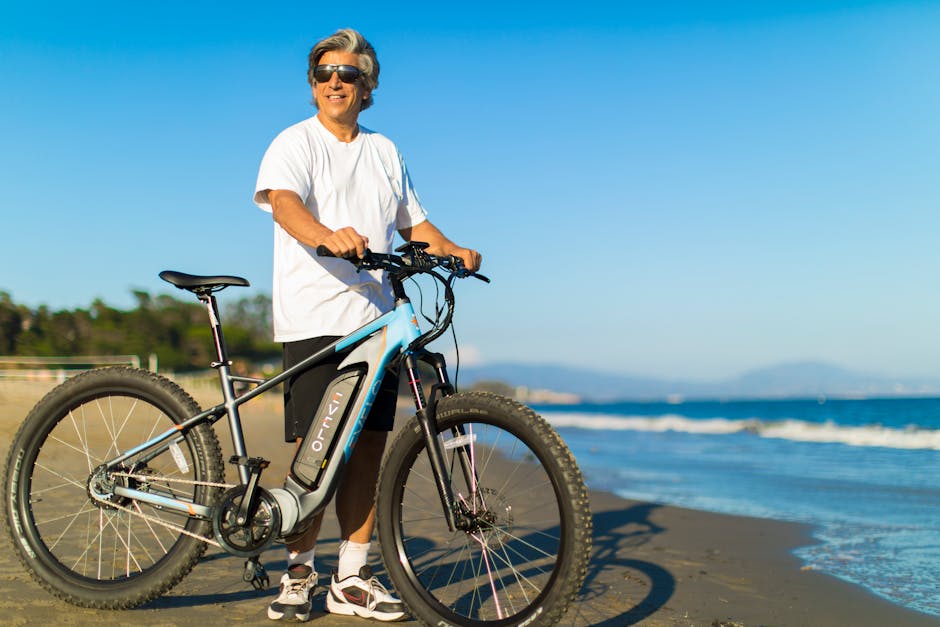
Photo by Team EVELO on Pexels
Electric bicycles, also known as eBikes, have gained popularity in recent years as a convenient and eco-friendly mode of transportation. At the heart of an eBike lies the motor, which is responsible for providing the necessary power and propulsion.
There are different types of motors used in electric bicycles, but the two most common ones are the hub motor and the mid-drive motor. Hub motors are generally located in either the front or rear wheel, while mid-drive motors are situated near the bike’s bottom bracket. Each type of motor has its own unique functions and advantages.
Hub motors, particularly rear hub motors, are more popular among casual riders and commuters. These motors are known for their simplicity and ease of use. They provide direct power to the wheel, making the eBike feel similar to a traditional bicycle but with an added boost. Rear hub motors also offer good acceleration and have a more balanced weight distribution, which enhances the bike’s stability.
On the other hand, mid-drive motors are favored by more experienced riders and those who plan to take on challenging terrains. These motors are positioned near the bike’s pedals, which allows them to leverage the bike’s existing gears. As a result, mid-drive motors offer better efficiency and torque, making them suitable for climbing steep hills or riding off-road. The placement of the motor in the center also contributes to improved balance and maneuverability.
In addition to the type of motor, the power output is another important aspect to consider. Electric bicycles usually have motors ranging from 250 watts to 750 watts, with higher wattages providing more power and speed. However, it’s essential to adhere to local regulations regarding the maximum power limit allowed for eBikes in your area.
To control the motor and adjust the level of assistance, eBikes are equipped with a controller and a display panel or handlebar-mounted control unit. These components allow riders to choose between different power levels or even switch to pure pedal power when desired.
Understanding the motor’s role in an electric bicycle is crucial for selecting the right eBike that suits your needs and preferences. Whether you opt for a hub motor for a smoother and simpler ride, or a mid-drive motor for tackling challenging terrains, the motor is the powerhouse that transforms a regular bicycle into an electric marvel.
Stay tuned for more informative articles about electric bicycles, their components, and the benefits they offer in our Tampa Bay eBikes blog.
The importance of the controller (how it regulates power delivery and assists in controlling the bicycle)
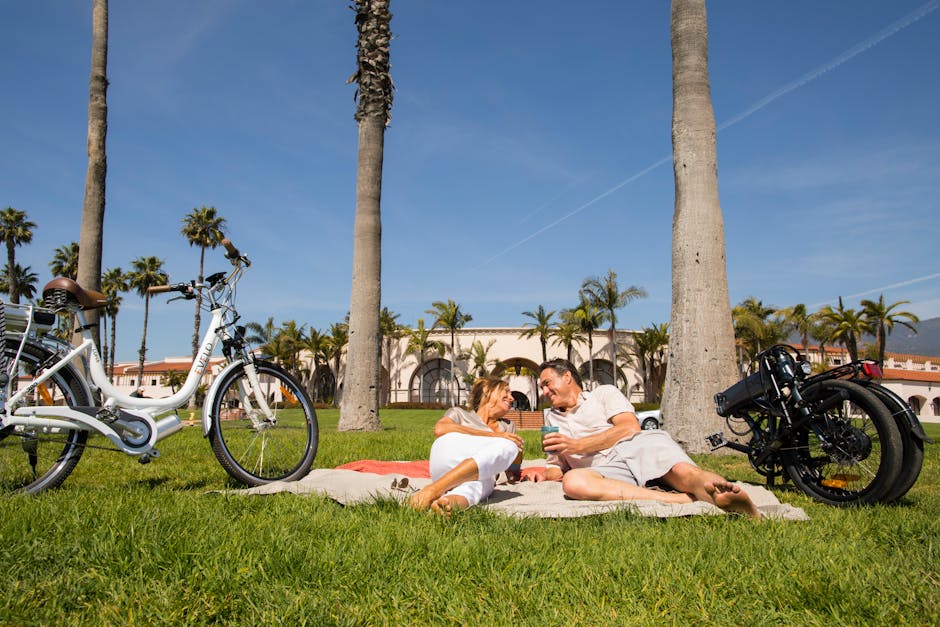
Photo by Team EVELO on Pexels
The importance of the controller in electric bicycles cannot be understated. This vital component is responsible for regulating the power delivery to the motor and assisting in controlling the bicycle.
The controller acts as the brain of the electric bicycle, receiving signals from the rider through the throttle or pedal-assist sensor and translating them into instructions for the motor. It monitors and adjusts the power output based on the rider’s input, ensuring a smooth and efficient ride.
One of the key functions of the controller is to regulate the power delivery to the motor. It determines how much electrical current should be sent to the motor based on the rider’s desired level of assistance. This allows riders to control the speed and power of their e-bike, whether they want a gentle boost during a leisurely ride or maximum power for tackling steep hills.
In addition to power delivery, the controller also plays a crucial role in controlling the bicycle’s functions and features. It can be programmed to provide different levels of assistance, allowing riders to choose between eco, sport, or turbo modes, depending on their preferences and terrain. Some controllers also offer regenerative braking, which converts the energy generated during braking into electrical energy that can be stored in the battery, increasing overall efficiency.
Furthermore, the controller ensures safety by monitoring various parameters, such as temperature and voltage, and implementing safety measures to prevent damage to the motor and battery. It may limit the power output if the system exceeds safe operating conditions, protecting the components from overheating or overloading.
Overall, the controller is a critical component of an electric bicycle, as it not only regulates power delivery but also assists in controlling the bike’s performance. Its ability to interpret rider input and provide appropriate and efficient assistance makes it an essential part of the electric bicycle system, ensuring a smooth, controlled, and enjoyable ride.
Explaining the sensors’ role in electric bicycles (how they detect speed, torque, and pedal cadence)
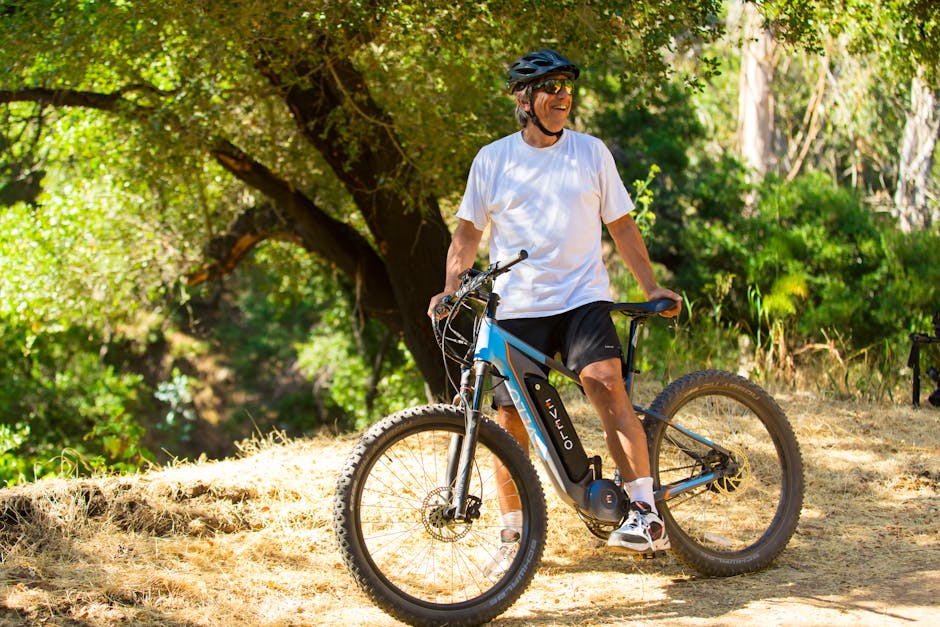
Photo by Team EVELO on Pexels
In order to understand how electric bicycles work, it’s important to explore the various sensors that play a pivotal role in their functionality. These sensors are responsible for detecting important factors such as speed, torque, and pedal cadence, which ultimately determine the level of assistance provided by the electric motor.
One of the key sensors found in electric bicycles is the speed sensor. This sensor is typically located near the rear wheel and its main purpose is to detect how fast the bicycle is moving. By measuring the rotation of the wheel, the speed sensor calculates the current speed of the bicycle and relays this information to the motor controller. Based on this speed reading, the motor controller adjusts the motor assistance accordingly. If the rider is pedaling slowly or the bicycle is at a standstill, the motor may provide a greater level of assistance to help get the bike moving. On the other hand, if the rider is cruising at a high speed or pedaling vigorously, the motor assistance may be reduced or turned off completely.
Another important sensor in electric bicycles is the torque sensor. This sensor is typically integrated into the crankset or bottom bracket area of the bicycle. Its main function is to detect the amount of force or torque being applied to the pedals by the rider. By constantly monitoring the torque being exerted, the torque sensor provides feedback to the motor controller, allowing it to adjust the motor assistance in real-time. This means that the motor can provide more power when the rider is pedaling hard or climbing uphill, and reduce assistance when the rider is pedaling lightly or going downhill. This dynamic adjustment not only improves efficiency but also ensures a more natural riding experience.
In addition to the speed and torque sensors, many electric bicycles also utilize a pedal cadence sensor. This sensor is typically located in the pedal cranks or in the bottom bracket area and measures the rotation speed of the pedals. By detecting the pedal cadence, the sensor provides information to the motor controller about the rider’s pedaling rhythm. This allows the motor controller to synchronize the motor assistance with the rider’s pedaling motion, providing a seamless and responsive riding experience. For example, if the rider starts pedaling faster or slower, the motor assistance can be adjusted to match the new pedaling cadence, maintaining a consistent power delivery.
Overall, these sensors play a crucial role in the operation of electric bicycles. By constantly monitoring factors such as speed, torque, and pedal cadence, they enable the motor controller to provide precise and efficient assistance to the rider. This integration of sensors and motor control technology is what makes electric bicycles a versatile and enjoyable mode of transportation.
Different types of electric bicycle systems (pedal-assist vs. throttle-based systems)
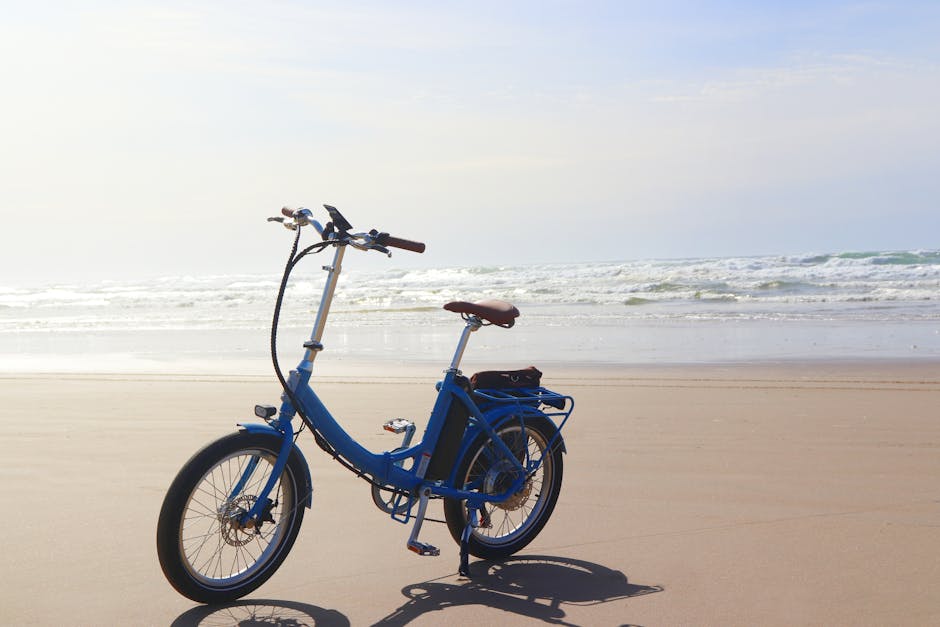
Photo by Max J on Pexels
Electric bicycles, also known as eBikes, have become increasingly popular in recent years. These innovative two-wheelers are equipped with various electric-assist systems that enhance the riding experience. In this section, we will explore the different types of electric bicycle systems, specifically comparing pedal-assist and throttle-based systems.
Pedal-assist systems, also referred to as pedelecs, are one of the most common types of eBike systems available today. As the name suggests, these systems provide assistance to the rider when they pedal. Pedal-assist eBikes are equipped with sensors that detect the rider’s pedaling motion and apply the electric motor’s power accordingly. The level of assistance can usually be adjusted, offering several modes that determine the degree of electric assistance provided.
One of the advantages of pedal-assist systems is that they offer a more natural biking experience. The motor kicks in as soon as the rider starts pedaling, providing a boost that makes riding uphill or against strong winds much more manageable. The assistance offered by pedal-assist systems is proportional to the rider’s input, creating a symbiotic relationship between human power and electric assistance.
Throttle-based systems, on the other hand, operate differently. Instead of relying on the rider’s pedaling motion, these systems utilize a throttle, similar to a motorcycle or scooter. When the rider twists or activates the throttle, the electric motor engages and propels the eBike forward without the need for pedaling. Throttle-based systems offer instant and constant power, allowing riders to enjoy effortless acceleration and higher speeds.
For those seeking a more relaxed and leisurely riding experience, throttle-based systems can be ideal. They eliminate the need for constant pedaling, making eBikes more accessible for individuals with limited mobility or those who simply prefer a more effortless ride. However, it’s important to note that throttle-based systems may not offer the same level of exercise and physical exertion as pedal-assist systems.
Both pedal-assist and throttle-based systems have their merits, and the choice ultimately depends on individual preferences and intended use. Pedal-assist systems are excellent for those who want to maintain an active lifestyle, getting some exercise while still enjoying the assistance of an electric motor. On the other hand, throttle-based systems are great for individuals who prioritize convenience and effortless transportation.
In conclusion, electric bicycles come in various systems, with pedal-assist and throttle-based systems being the primary options. Pedal-assist systems provide assistance based on the rider’s pedaling motion, offering a more natural and symbiotic riding experience. Throttle-based systems, on the other hand, utilize a throttle to engage the electric motor, providing instant and constant power without the need for pedaling. Understanding the differences between these systems can help you choose the eBike that best suits your needs and preferences.
How electric bicycles provide assistance while riding (how the motor amplifies pedal power or provides complete propulsion)
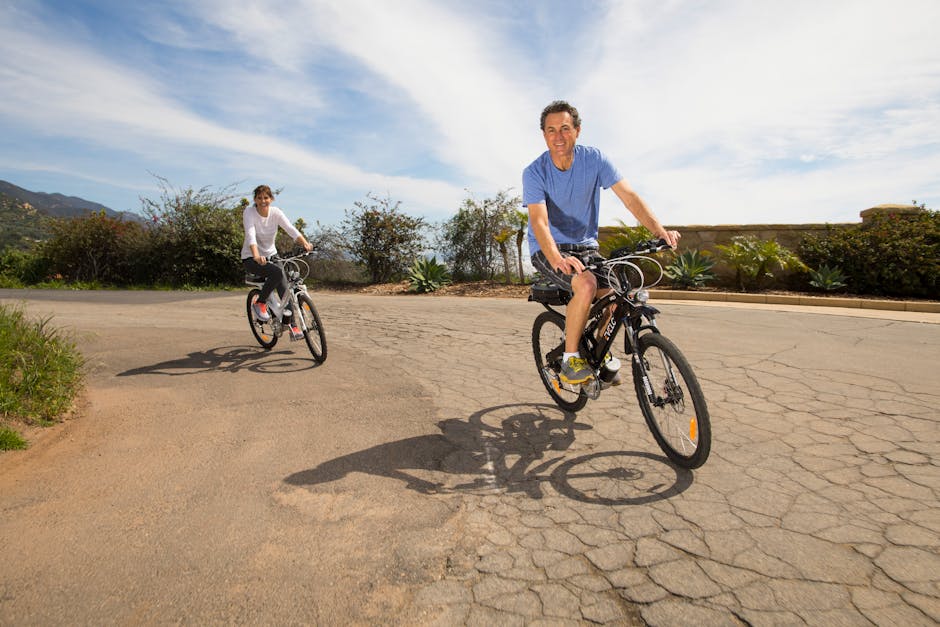
Photo by Team EVELO on Pexels
Electric bicycles, or eBikes, have gained immense popularity in recent years due to their ability to provide assistance while riding. One of the most intriguing aspects of eBikes is how they utilize a motor to amplify pedal power or even provide complete propulsion.
At the heart of an eBike is the electric motor, which is typically located near the rear wheel hub or integrated into the crankset. This motor is powered by a rechargeable battery that is typically mounted on the frame of the bicycle. When the rider starts pedaling, the motor kicks in and provides a boost to their efforts.
The level of assistance provided by the motor can be adjusted depending on the rider’s preference or the terrain they are riding on. Most eBikes offer multiple levels of assistance, ranging from low to high, which can be easily controlled through a handlebar-mounted display or controller.
In pedal-assist mode, the motor senses the rider’s pedaling motion and provides a proportional amount of assistance. For example, if the rider is pedaling lightly, the motor will provide a small boost, and if the rider is pedaling more forcefully, the motor will provide a greater boost. This system not only helps riders go faster but also makes uphill climbs or long distances more manageable, as the motor takes some of the strain off the rider’s legs.
Some eBikes also offer a throttle mode, which allows riders to engage the motor without pedaling. In this mode, riders can simply twist a throttle on the handlebar to activate the motor and enjoy effortless propulsion. Throttle mode is particularly useful for riders who may have limited mobility or prefer not to pedal at times.
The beauty of eBikes is that they provide a seamless integration of human and motor power. Riders still need to pedal and engage with the bike, but the motor enhances their efforts, making riding more enjoyable and accessible to a wider range of individuals. It’s important to note that eBikes are not meant to replace traditional bicycles but rather offer an alternative mode of transportation that combines the benefits of both cycling and electric assistance.
So the next time you see an eBike zipping by effortlessly, know that it’s not magic but the result of clever engineering that combines pedal power with electric assistance. Whether you choose to use pedal-assist mode or engage the throttle for a quick burst of speed, eBikes truly revolutionize the way we ride, allowing us to explore new cycling possibilities with ease.
Advantages of electric bicycles (environmental benefits, health advantages, and economical aspects)
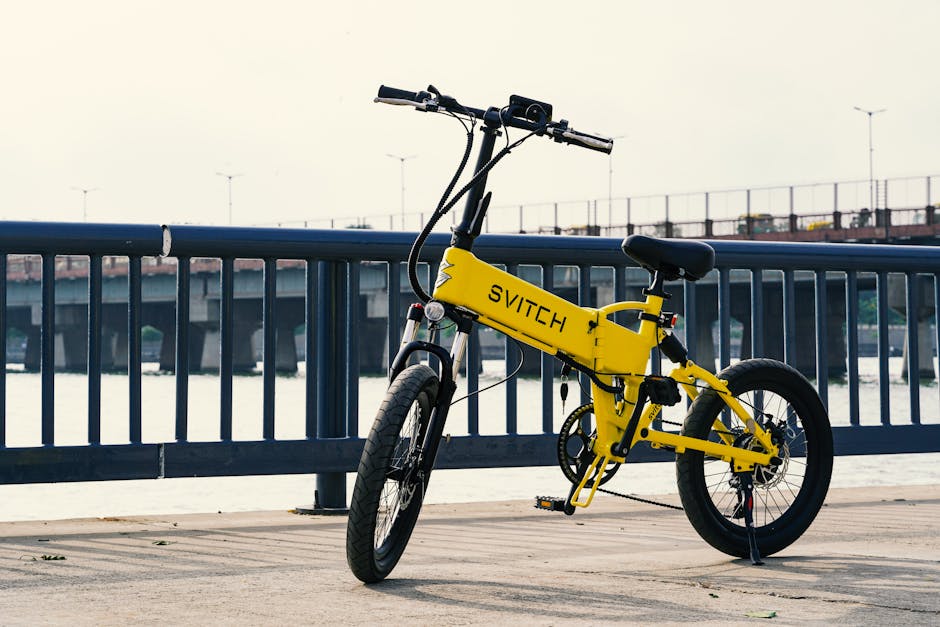
Photo by Svitch Bike on Pexels
Electric bicycles, also known as eBikes, have gained popularity in recent years for their numerous advantages over traditional bicycles. These innovative modes of transportation offer a range of benefits that make them an appealing choice for commuters, leisure riders, and environmentally conscious individuals alike.
One of the most significant advantages of electric bicycles is their positive impact on the environment. With the increasing concern for pollution and greenhouse gas emissions, eBikes are a greener alternative to cars and motorcycles. Unlike vehicles that run on fossil fuels, electric bicycles produce zero emissions while in use. By choosing an eBike for your daily commute or recreational rides, you contribute to reducing air pollution and combating climate change.
Apart from their environmental benefits, electric bicycles also offer several health advantages. Regular cycling, whether on a traditional or electric bike, is known to improve cardiovascular fitness, muscle strength, and overall stamina. The added assistance provided by the electric motor in eBikes helps to reduce the physical strain on riders, making cycling more accessible to people of all fitness levels. This means that even if you are new to exercising or have physical limitations, you can still enjoy the health benefits of cycling with the help of an electric bicycle.
Another advantage of electric bicycles is their economical aspects. With rising fuel prices and the cost of vehicle maintenance, eBikes provide a cost-effective option for transportation. Electric bicycles are significantly more affordable to operate compared to cars, motorcycles, or even public transport. They require minimal maintenance, usually limited to battery charging and regular check-ups. By using an eBike for your daily commute, you can save money on fuel expenses, parking fees, and reduce wear and tear on your vehicle.
Furthermore, electric bicycles have become a popular choice for those looking for an efficient and time-saving mode of transportation. With the assistance of the electric motor, eBikes allow riders to travel longer distances with less effort. This means that you can cover more ground in a shorter time, avoiding traffic congestion and reaching your destination quicker. Additionally, electric bicycles provide the flexibility to choose between pedaling manually or relying solely on the electric motor, making them ideal for individuals who may need an extra boost during their ride.
In conclusion, electric bicycles offer numerous advantages that make them a desirable choice for riders. From their positive impact on the environment to the health benefits they provide and the economical aspects, eBikes are an excellent alternative to traditional modes of transportation. With their increasing popularity and technological advancements, electric bicycles are undoubtedly transforming the way we commute and enjoy leisure rides, making them a great investment for individuals seeking a greener, healthier, and more efficient transportation option.

